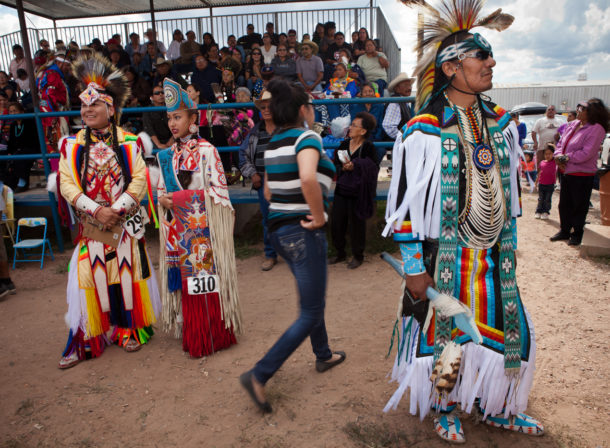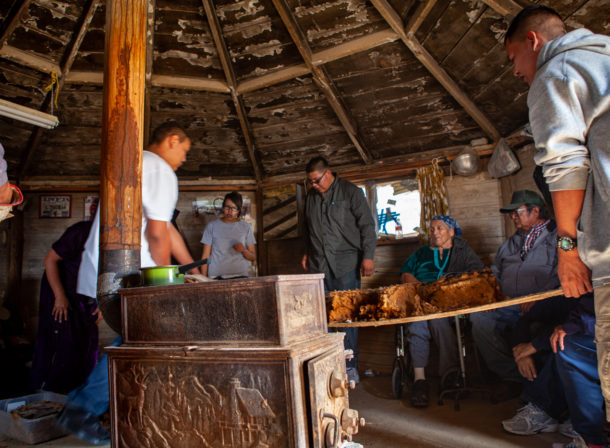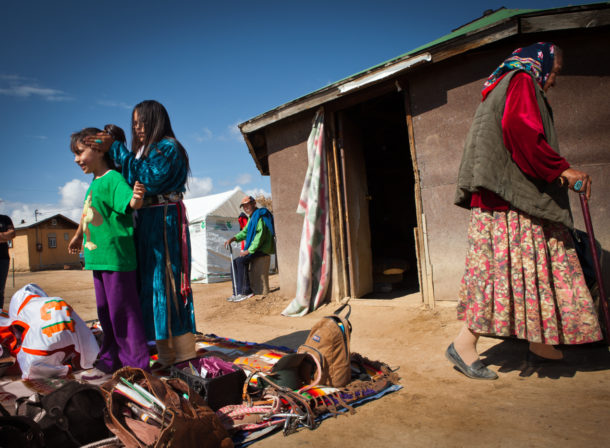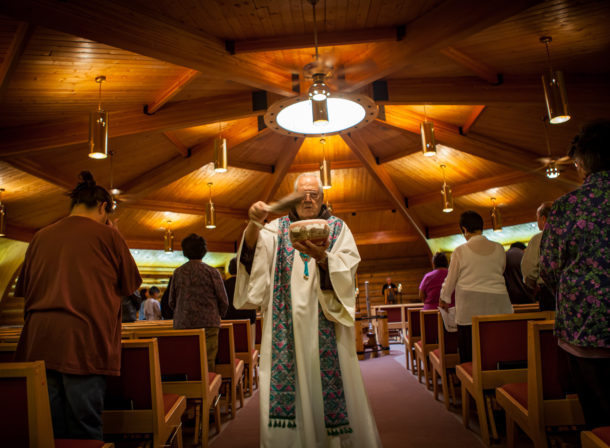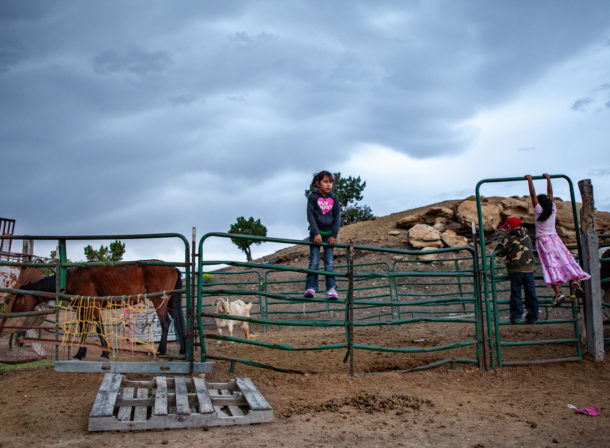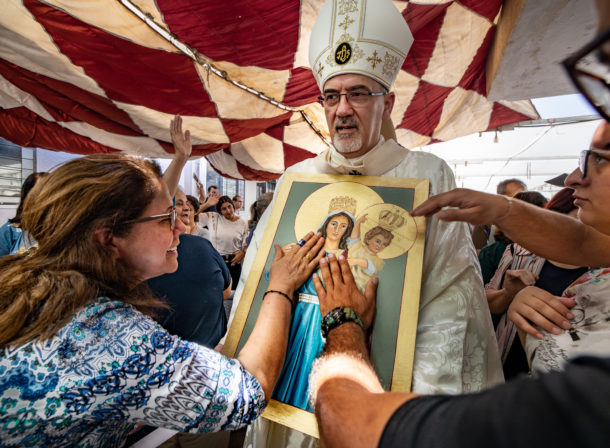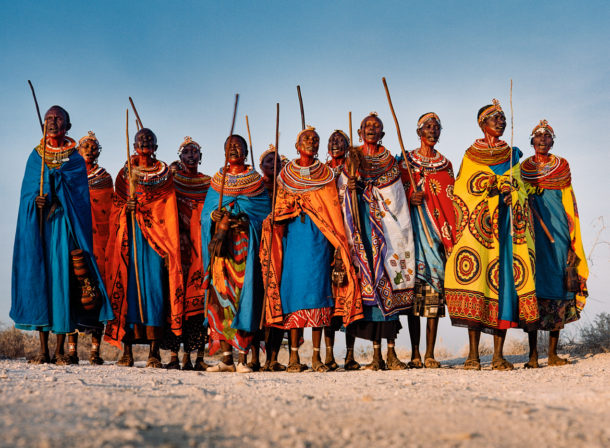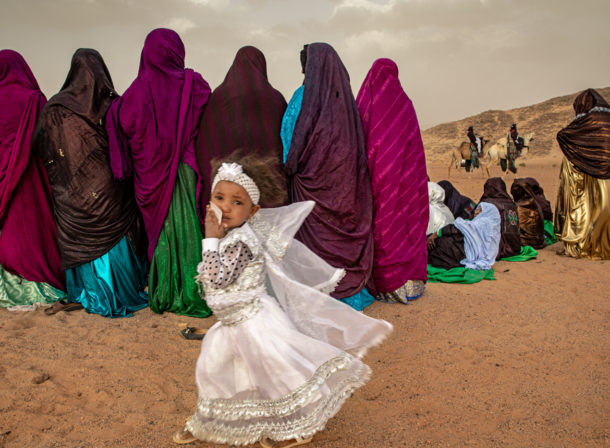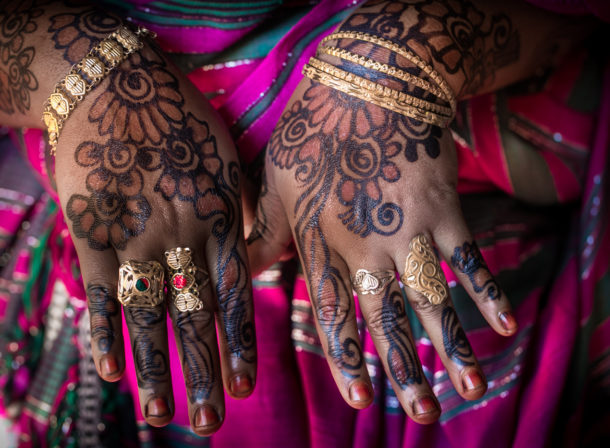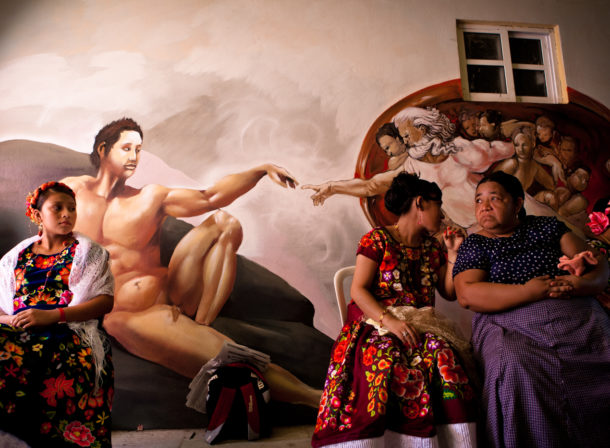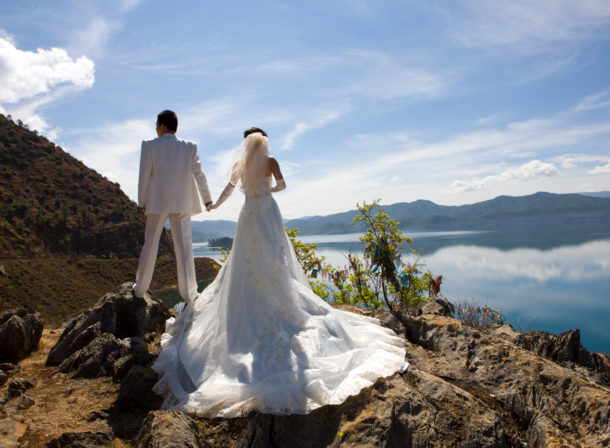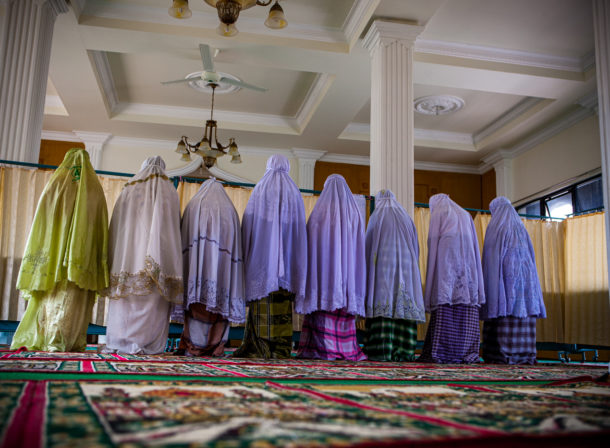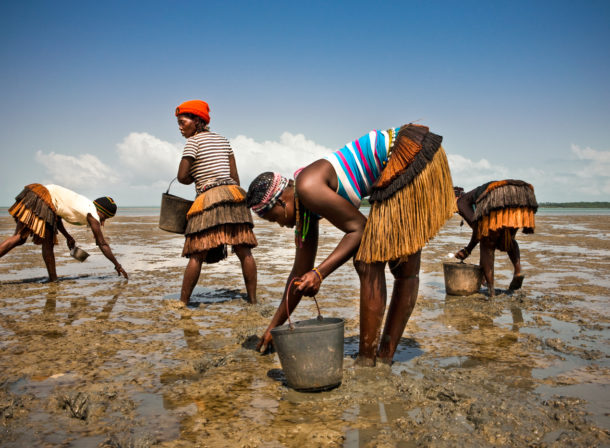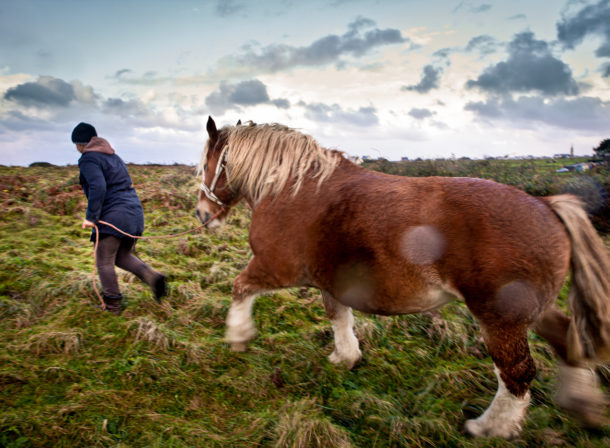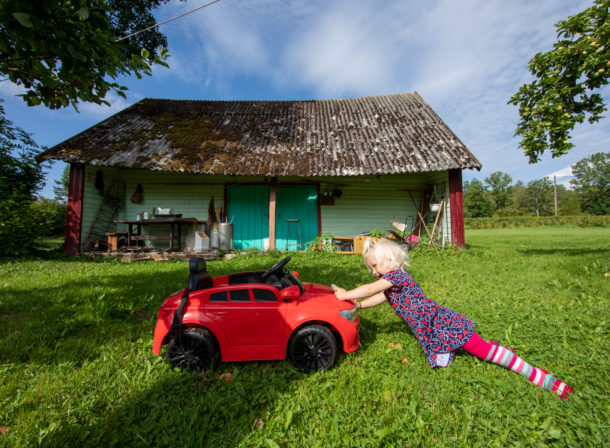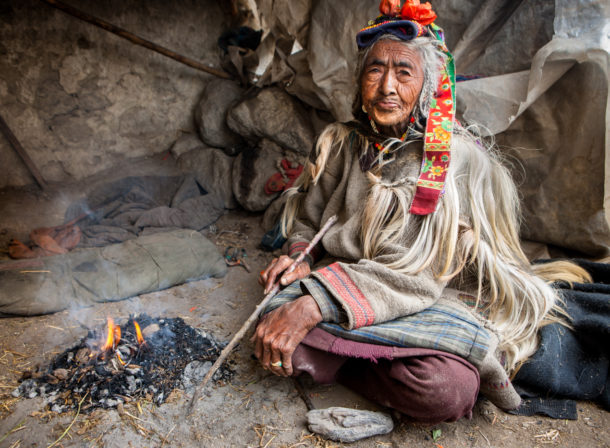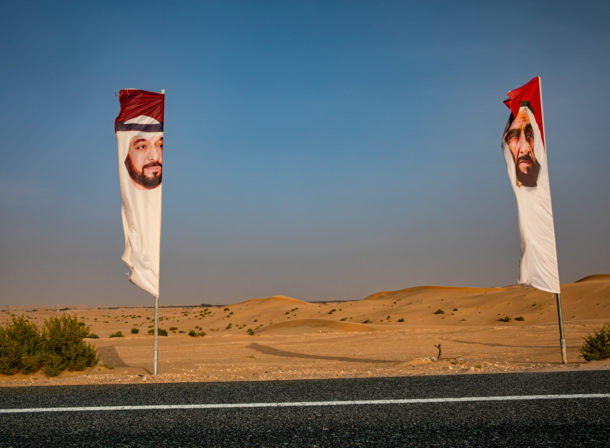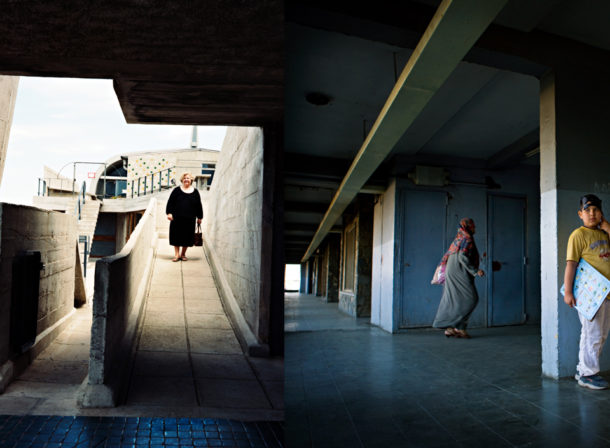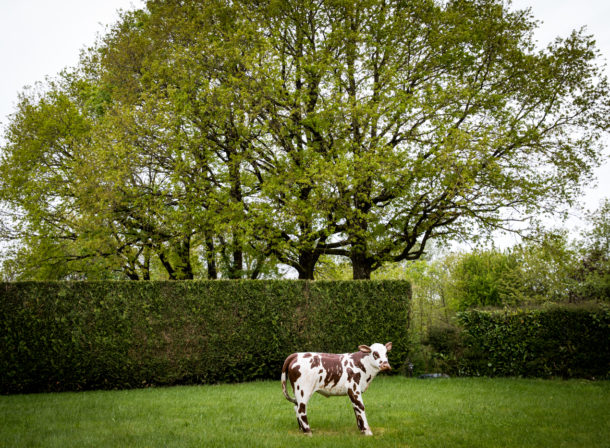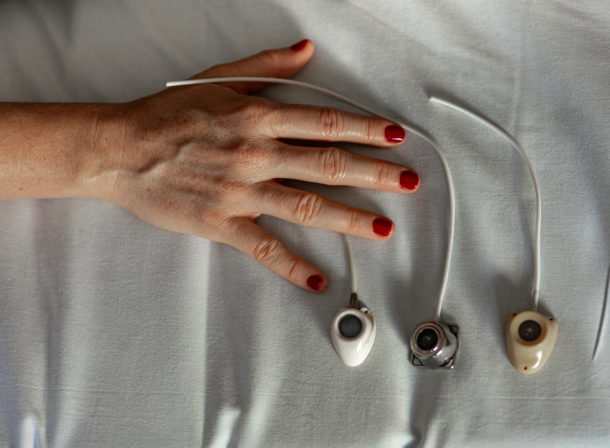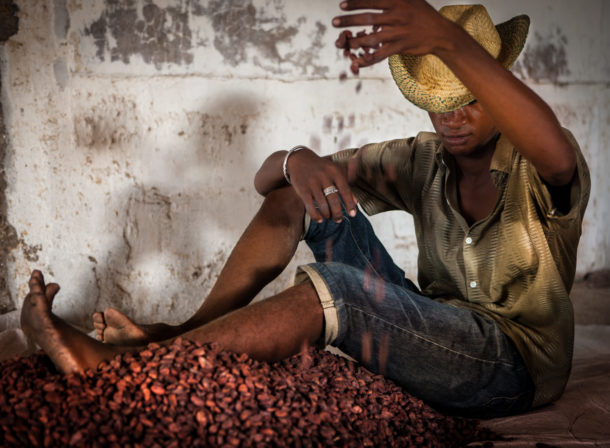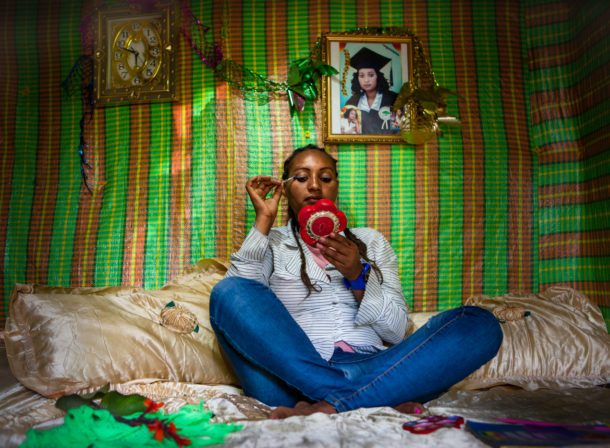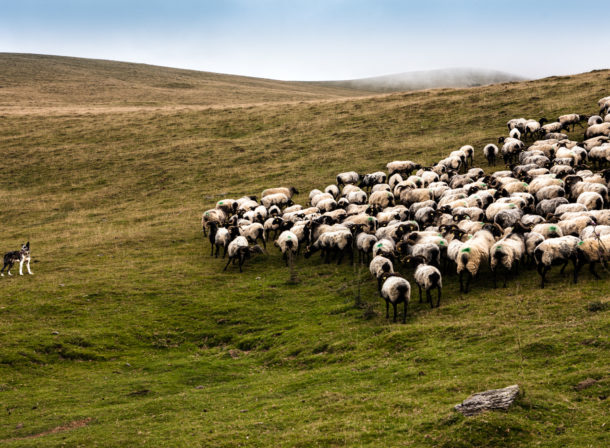The Navajo reservation, the largest in the Americas covers over 71,000 km2 and remains the largest land area retained by an indigenous tribe. Since 1923, it has expanded over three states: Arizona, New Mexico and Utah. It functions as a sovereign nation with its 300,000 citizens, its own president, assembly, legal sytem and police. With houses built from recycled materials, the difficult access to drinking water and electricity for half of the population, rampant unemployment, the Navajo Nation is fragile. Its economy is based on the extraction of raw materials (petroleum, coal and, in the past, uranium) entrusted to companies leasing concessions; it largely depends on federal subsidies.
Women are the backbone of Navajo society, based on a matrilineal structure. Name and clan membership are passed down from the mother. A child’s identity is defined by affiliation to four clans: that of the mother for that of the father, then that of the maternal grandfather and the paternal grandfather; the clans of the two grandmothers are not mentioned since they are also those of the mother and the father.
Women own the house, passed down from mother to daughter. In the event of a debate around important issues, the oldest woman is the one who always takes the final decision, even if the one who embodies the authority and brings the child back on the right path is the maternal uncle.
There are four sacred mountains on the four cardinal points of Navajo territory - Sisnaajiní, Mount Blanca to the east, Tsoodzil, Mount Taylor to the south, Dook’o’oostííd, Mount San Francisco, to the west Dibé nitsaa and Hesperus in the north. In the center of the territory an encircled mountain symbolizes the meeting of the feminine and the masculine, of Father-sky and Mother-earth, home to equilibrium, appropriateness, unity and beauty, all words for which the Navajo have a unique expression: hozhó.
Chelly Canyon. Spider Woman, one of the main Navajo deities, lives in Spider Rock. The pointed rock is said to be linked to the rest of the Canyon by a web made up of rainbows. The female deities are central to the creation of the Navajo people.
These women work in a coal mine located on the reserve. They are completely independent from a financial point of view. On the reserve women don't hesitate to choose a job that calls for the use of their physical strength, and it is not uncommon for them to return to school after having had children.
Since 1952, a “Miss Navajo” contest takes place in Window Rock, capital of the reserve. The Navajo Nation Fair brings together nearly 10,000 Amerindians: Apaches, Comanche, Cheyenne and Hopis, from all the reserves of the United States to attend the pow-wow, a gathering of North American Indian festivals, where parades in traditional dress alongside dances and rodéos take place.
The ten Miss Navajo contenders officiate in front of nearly 400 people, including the President of the Navajo Nation and a medicine man. In spite of being called "Miss", this contest rewards not so much the physical appearance as the anchoring in Navajo culture.
In order to become Miss Navajo, young women must show that they know the language, songs, dances and the spirituality of their community inside out. The winner will then be an Ambassador of the Navajo people for a whole year, and will have to promote her culture throughout the country. Winnie is getting ready.
Five women judges will assess them throughout the week and scrutinize each of their actions. The first test is to slaughter a sheep in public. Winnie starts by stroking and blessing the animal pledged to her blade and then kills it quickly, painlessly, with a flawless section of the carotid artery. An act performed under the eyes of a hypnotized, admiring audience and in an atmosphere of dust and the smell of blood.
Winnie just won the "Miss Navajo" contest. It is more honorific than a Western miss, which shines only through her physical appearance.
Shoshana is celebrating her kinaaldá, which will mark the transition from childhood to puberty and allow her to join the world of women. Her long hair is carefully pulled up and tied with white cotton threads, a symbol of knowledge and wisdom. For four days and four nights, the teenager will grind the grain, knead the bread, and cut a lamb without ever touching sugar, salt or spices.
The family’s daughters help Shoshana stitch corn husks in order to fashion a round wrapper, more than one meter in diameter, used to bake the corn cake, an exclusive women’s task.
Men are excluded from the ceremony surrounding the kinaaldá, except young boys and uncles of the family. Their mission is to dig a hole in the earth in front of the hogan (the traditional Navajo house), where a corn cake will be baked.
Women insert the vegetable cover in the hole, to then pour the dough into it, and the whole is covered with ashes and earth. Shoshana then plunges four connected bamboo sticks into it, as a symbol of her weapons to fight off hunger.
First she washes her hair and her jewelry in water containing yaka, a purifying root, then walks around the hogan from left to right, circling around the central stove. Leaving the house, she finally runs eastward till she’s breathless, followed by all of her older cousins.
The shaman gave Shoshana a sacred and secret name, which she will only use while praying, when introducing herself to the deities. From now on, every day she will pull out of a tiny leather pouch a few pinches of yellow corn pollen and hurl it eastward, where dawn begins. A gesture that symbolizes the power to give life. “Yá’a’tééh,” the young Navajo woman will say in a salute to the deities and feminine energies: the earth, the mountain, the corn pollen, and the water.
Shoshana vient de passer la nuit dans la hogan autour de sa famille et de Ricky le chaman, qui d’une voix rauque a récité des litanies de l’univers Navajo. Pendant ce temps, le gâteau de maïs cuisait en terre. Dès l’aube, enfin prêt, il sera déterré et offert aux convives.
The corn cake is finally ready to be cut and generously handed out to the guests by Shoshana, minus its central portion reserved for Ricky the shaman. By this gesture, she learns the virtues of generosity and sharing.
Shoshana is blessed along with all that she touches, so all of the guests are seeking her contact, and place a personal item on a carpet. This is the moment where the hands of the young girl have a particular power in the eyes of the Navajo: they possess the gift of healing or relieving pain. Shoshana positions her hands on the head of a little cousin who suffers from migraines.
Throughout the 20th century, the federal government sent the Navajo to so-called boarding schools, an elegant way of referring to actual military camps where the Navajos were beaten if they dared to speak their language. As a result, half of them no longer speak it.
The Franciscans incorporated the Navajo spiritual vision into their worship, as shown by the Church of Our Lady of Fatima in Chinle, whose round shape recalls the hogan, the traditional house. Many evangelical churches did the opposite, demonizing the indians’ ancestral beliefs.
Each time she gave birth, Candilaria Johnson kept the baby's umbilical cord with the purpose of giving the baby a lasting root. This is why, even if a Navajo leaves the reserve, he always comes back to his land.
Most young people want to preserve their roots while integrating the Western world. The lucky ones obtain scholarships to study in universities and then return to the reserve. They are mostly girls.




